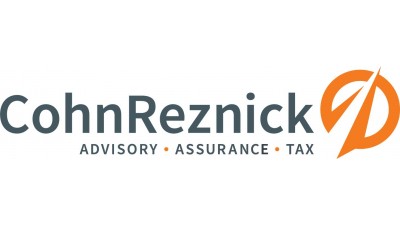Tax Credit Investment Market Booms, But More Can Be Done To Solve Housing Crisis

Thanks to an unprecedented demand for affordable housing — and strict banking regulations — the investment market for Low-Income Housing Tax Credits is booming like never before.
“Housing credit properties are virtually filled up nationwide,” said Matt Barcello, a senior manager in CohnReznick’s Tax Credit Investment Services group. “And all other operating performance metrics are at all-time highs.”
But analysts think that without federal expansion of the program, the share of rent-burdened households will continue to increase nationwide.
Low-Income Housing Tax Credits, or LIHTCs, are awarded by state governments to developers to build or renovate affordable housing units. Developers sell those credits to finance their projects. The buyers are typically banks and life insurance companies, but the credits are gaining appeal among other institutional investors, according to Cindy Fang, a partner in CohnReznick’s Tax Credit Investment Services group.
Since 2008, CohnReznick’s Housing Tax Credit Investments report has tracked the performance of the LIHTC market, providing investors with hard data for portfolio benchmarking and underwriting. The report is the only one of its kind in the industry.
Prior to 2000, these credits were worth much less than today, and the properties that the credits supported were not performing nearly as well. But today, as the CohnReznick team prepares to release its 2019 report, housing credit investments are considered among the safest and most reliably performing investments in real estate.
“LIHTC investments offer around a 5% return, which might not sound attractive compared to other alternatives in real estate, but these are safe, predictable, long-term performing assets and can be a very favorable investment on a risk-adjusted basis,” Fang said.
The credits are performing so well partly because the demand for affordable housing is at an all-time high. In American cities, over half of the waitlists for affordable units are filled. The rise in housing costs is significantly outpacing wage growth nationwide. Given the current state of housing in the U.S., a drop-off in demand for affordable housing doesn’t seem likely, Barcello said.
Another reason the market for these credits is thriving is the Community Reinvestment Act of 1977, which evaluates banking institutions on how they serve moderate- and low-income neighborhoods. One of the few easy ways for banks to maintain a high CRA rating is to invest in LIHTC properties. In recent years, banks have placed a great deal of capital into the market for these credits, reducing their availability.
“The performance data we’ve gathered shows support for an increase in credits,” Fang said. “The housing credit program is the main production and preservation vehicle for affordable housing in the country.”
In June, a bipartisan effort from U.S. Sens. Maria Cantwell, Todd Young, Ron Wyden and Johnny Isakson and U.S. Reps. Suzan DelBene, Kenny Marchant, Don Beyer and Jackie Walorski, reintroduced a bill to increase the number of credits awarded by 50%.
Along with investors, developers and investment managers who will undoubtedly use CohnReznick’s forthcoming report, Fang hopes that legislators interested in the LIHTC market will also look to it and see a pressing need to expand the program.
“LIHTCs sound good conceptually to many new investors, but there is often a learning curve,” Barcello said. “This is one of the ways the study can be really helpful, by providing a proven track record over many years.”
With the report, developers, fund managers and investors are better able to underwrite deals, adjust for risk and benchmark their performance against others. And with over 25,000 properties each providing around 50 data points, Barcello said, data analysts will be able to dig into the coming report more thoroughly than its predecessors.
“Despite being a fairly niche area of real estate, the LIHTC program has had an outsized effect on Americans’ well-being,” Fang said. “These credits have helped build more than 3 million affordable apartment units to help millions of low-income families. We’re all extremely proud to be a part of that.”
This feature was produced in collaboration between Bisnow Branded Content and CohnReznick. Bisnow news staff was not involved in the production of this content.

